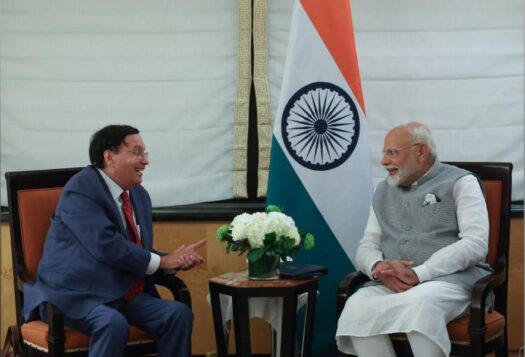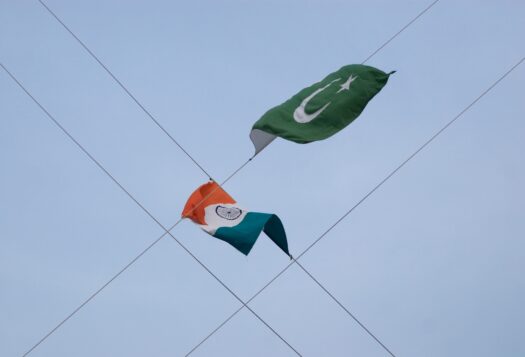
Indo-Pak CTBT: High Merits, Bleak Outlook!
By Sobia Paracha
Twice this month, Pakistan has offered to begin negotiations with India on a mutual nuclear test ban arrangement. The proposal is a natural next step after both states’ longstanding policy of a unilateral moratorium on nuclear testing, and would strengthen each of their cases to join the Nuclear Suppliers Group (NSG). It may be too soon to comment on the viability of such an arrangement as the nature of the proposal is still not clear. However, considering India’s historic stance towards the Comprehensive Nuclear-Test-Ban Treaty (CTBT) and reports of it developing a thermonuclear bomb, a positive response from India is not likely. However, if India agrees to begin a dialogue to this end, it will help break the ice, and start a new chapter in the two neighbors’ nuclear confidence-building and risk management efforts, which remain stalled for almost a decade.
It has been Pakistan’s long-standing position that it wants to join the CTBT simultaneously with India. Thus, it is only natural that it wants to enter into a dialogue with India on this issue. Pakistan’s Foreign Office Spokesperson Nafees Zakaria stated that the arrangement would be a reflection of “[Pakistan’s] consistent support for the objectives of the CTBT.” However, the proposal to have an effective test ban without waiting for CTBT’s entry into force is a new development.
With the absence of complete information on the proposal, it can only be surmised that it is aimed at strengthening the norm against testing in South Asia and as a nuclear confidence-building measure (CBM). However, transparency and verification would still remain in question due to various technical and political reasons. There is a highly sophisticated and widely distributed network of International Monitoring Stations (IMSs) built by the CTBT Organization (CTBTO) to monitor any nuclear explosion in major parts of the world. But how much access India and Pakistan will have to this data produced by the IMSs is unclear, as both have not even signed the treaty. Though CTBTO has planned to develop two IMS facilities in Pakistan, data from which will be available to it in the future.
Given the nature of Indo-Pak relations, it is not likely that the proposed arrangement would involve verification and transparency measures in addition to whatever capability is available based on IMSs and other national technical means. And a bilateral treaty without an effective verification regime and on-site inspections would be inherently toothless. Thus, withdrawal from a bilateral moratorium on testing might have international political repercussions, which may fluctuate based on the diplomatic capital each state has, but both states will need international support to enhance the confidence that each party is fully adhering to the test ban commitment.
On Pakistan’s part, the proposal is a reflection of diplomatic maturity and an effort to find the right balance between self-reliance and diplomacy to achieve national security objectives. The past ten years have seen both India and Pakistan engaging less with each other and militarizing more. It is hardly acknowledged in international diplomatic circles that recent developments in Pakistan’s nuclear program/policy (such as induction of short range systems like Nasr and blocking the Fissile Material Cut-off Treaty negotiations) are an immediate reaction to Indian nuclear and conventional modernization and offensive force postures. Pakistan has been blamed for having a risk manipulation strategy and has faced international diplomatic backlash for blocking negotiations in the Conference on Disarmament (CD). Even if reaching a breakthrough on a test ban in South Asia is unlikely in the short term, by proposing a test ban, Pakistan will be able to manifest that it is motivated to work for nonproliferation in the region, which is not possible without India’s cooperation. If nothing else, it will help Pakistan share the blame with India for increasing nuclear risks in South Asia and not qualifying for the membership of the Nuclear Suppliers Group if nonproliferation credentials are a prerequisite.
Furthermore, however limited in scope Pakistan’s proposal may be, it is a welcome step for non-proliferation. It is speculated sometimes that Pakistan might have to conduct nuclear tests in the future to increase the reliability of its short-range weapons. It is a dynamic that is influenced by India’s behavior in other domains (such as operationalization of the Cold Start Doctrine), but not directly linked to India’s future tests. It now seems clear that Pakistan is not envisaging an upcoming nuclear test unless India is, which is in line with Pakistan’s stated policy as well.
Even though President Obama has also proposed a CTBT-related Security Council resolution on the eve of CTBT’s 20th anniversary, the current international strategic environment is not very conducive to new efforts for non-proliferation or arms control involving major powers or the P-5. Nevertheless, the international non-proliferation regime led by the United States should support Pakistan’s initiative if it wants to check the nuclear arms race in South Asia. If Pakistan’s new proposal does not garner the level of international support it merits, Pakistan’s perception of the non-proliferation community’s discriminatory behavior will deepen.
India-Pakistan Non-Testing Agreement: A Non-Starter!
By Hina Pandey
Recently, Pakistan’s Advisor to the Prime Minister on Foreign Affairs, Sartaj Aziz, offered India, a nuclear non-testing bilateral arrangement amidst the widening chasm in India-Pakistan relations. This is the second time in a month that Pakistan’s senior official has offered such a course of action to India for improving the prospects of peace in the region. A similar offer was also made in the immediate aftermath of the 1998 nuclear tests, when Pakistan offered India mutual accession to the Comprehensive Nuclear-Test-Ban Treaty (CTBT). As much as the idea of nuclear sensibility on part of Pakistan and the possibility of nuclear restraint in South Asia is desired, the prospects of it getting translated into actual practice is near impossible. There are three primary reasons for this:
1. Mismatched Agenda for Talks: The timing for this specific nuclear CBM could not be more incompatible. Both India and Pakistan tried to mend the peace process with the onset of fresh leadership. However, in the last one year, especially post the Pathankot attack, the trajectory of bilateral relations has fluctuated so much so that any prospects for talks aiming at giving away nuclear concessions would be perceived in New Delhi as irksome. This should also be viewed in the context of India’s recent setting of a clear agenda for bilateral talks. The absence of the nuclear topic from this agenda is a clear indication that India would not like to entertain it at this time. In the current setting, any conversation between India and Pakistan is overshadowed by the narrative of meddling into each other’s affairs, cross border sparring, and a familiar pattern of the peace process going one step backwards. Additionally, one cannot ignore the element of perpetual mistrust playing spoiler in such a case. Also, in the past year, Pakistan has sent mixed signals to India on the nuclear issue, declaring earlier that it would maintain credible minimum deterrence for balancing strategic stability.
2. Nuclear Testing is Non-Issue for India’s Nuclear Suppliers Group (NSG) Membership: Ahead of the NSG’s upcoming meeting, Pakistan wants to project maturity in nuclear matters. This makes sense for Pakistan, especially when the NSG is currently undergoing a discussion on merit-based criteria. Offering nuclear non-proliferation commitments as a quid-pro-quo could be viewed as a smart move. On the other hand, for India, making such a move may not be desirable as it will likely not add significantly to the Indian case. This is to be understood in light of the current Indian approach towards non-proliferation—“to advance the objectives of nuclear non-proliferation in softer areas,” as I have argued elsewhere. The recent ratification of the Convention on Supplementary Compensation for Nuclear Damage, Additional Protocol to the International Atomic Energy Agency (IAEA) Safeguards, and Gift Baskets at the 2016 Nuclear Security Summit lend support to this notion. Additionally, India is hopeful of its NSG membership on the basis of these commitments; entering into a bilateral agreement for the same would actually mean weakening its own case. The no testing agreement might send positive signals regarding Pakistan, but it does not translate into anything meaningful for India. Furthermore, India has confidence in its good standing as far as NSG membership is concerned, so proving anything is not really required. While some Indian media reports may have highlighted China as a road block, it must be understood that the “the door to the NSG is not tightly closed.” Currently, the NSG’s consultations for membership are based on candidates having signed the Nuclear Nonproliferation Treaty, but exceptions to this rule have been made earlier and thus India remains hopeful. Besides, India is making dedicated diplomatic efforts towards the same. The no-testing issue in this respect remains diluted.
3. India’s Nuclear Posture is Different: While India in principle welcomes any prospects of restraint in the South Asian nuclear environment, it would likely not participate in any such mechanism at the cost of its own nuclear posturing, especially when China is not involved. Any alteration to the South Asian nuclear reality cannot be perceived without considering Chinese presence. Unlike Pakistan, India’s nuclear posture is not single-country specific. Moreover, it must be recognized that the idea of a nuclear-test-ban is a sensitive issue for India, especially while no details are available from the Pakistani sources on the constituents of the bilateral treaty. It is reported that both countries can work out the details based on mutually agreed conditions. Since India already has a voluntary moratorium on nuclear testing in place, it is unlikely that it would translate it into a legal obligation and close its space for diplomatic maneuvering in future. Lastly, the idea of a nuclear test ban through a legal treaty has the potential to be viewed as an indirect accession to CTBT, only without actually signing the treaty, the possibility of which remains unquestionably grim.
Pakistan has to “normalize” its nuclear record on its own, so tying India into its non-proliferation strategy might not be wise. Additionally, while perfection in timing this CBM may have been easier to achieve, the prospects of a legally binding nuclear test ban in South Asia are to be assessed in a realistic setting. It is likely to remain conditioned to the fundamental disparity in India and Pakistan’s nuclear posture.
***


